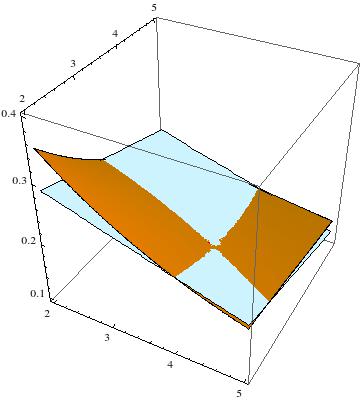How do you find the linear approximation L to f at the designated point P. compare the error in approximating f by L at the specified point Q with the distance between P and Q given #f(x,y) = 1/sqrt(x^2+y^2)#, P(4,3) and Q(3.92, 3.01)?
1 Answer
May 31, 2016
Explanation:
The tangent plane
where
The normal vector to
Giving
At
so the tangent plane reads
Given a point
and a point
Their distance is


